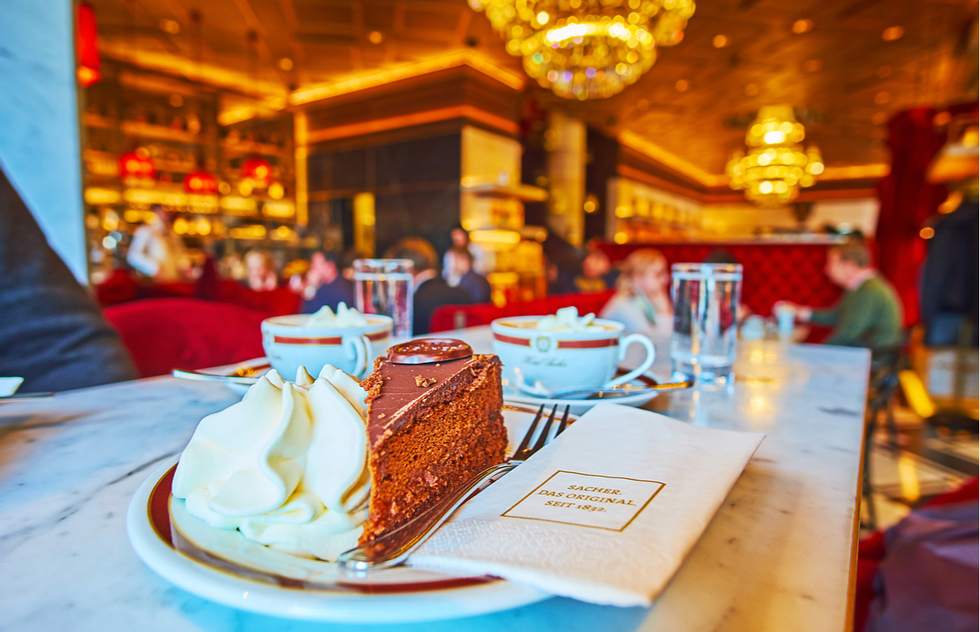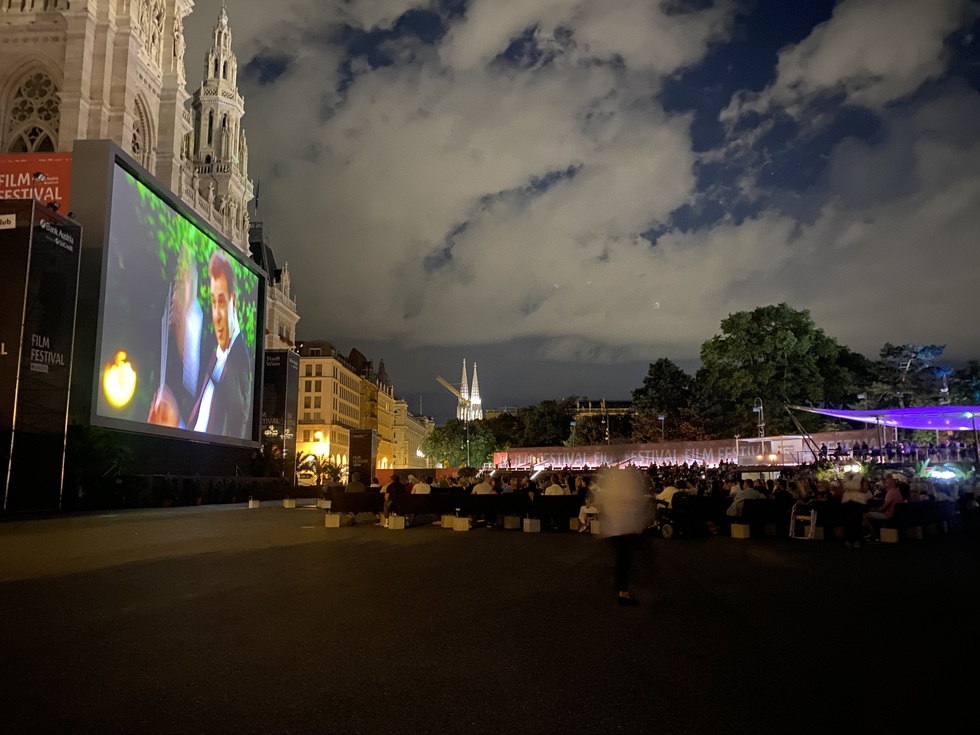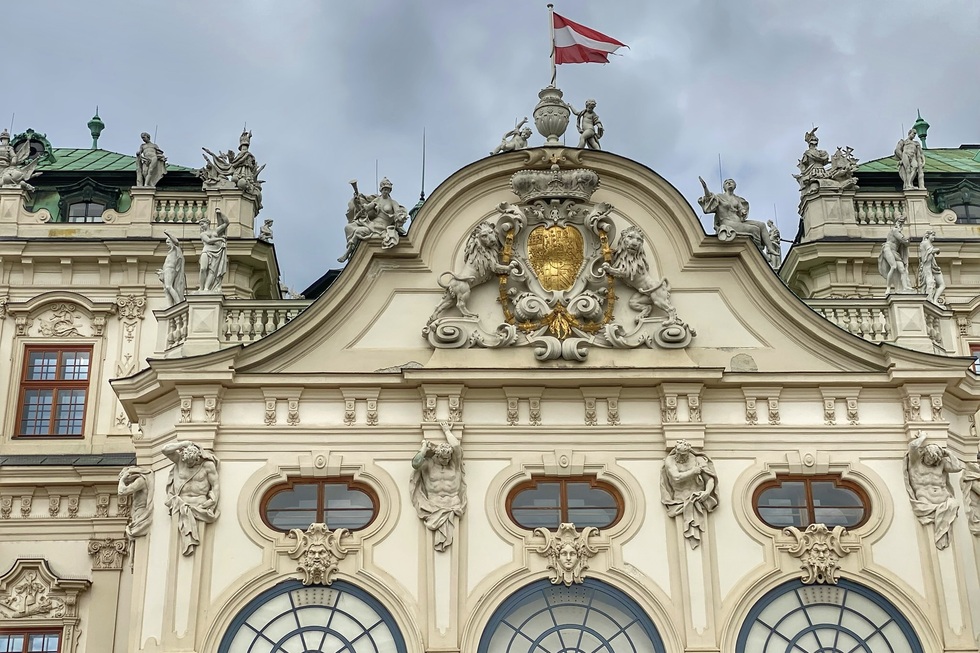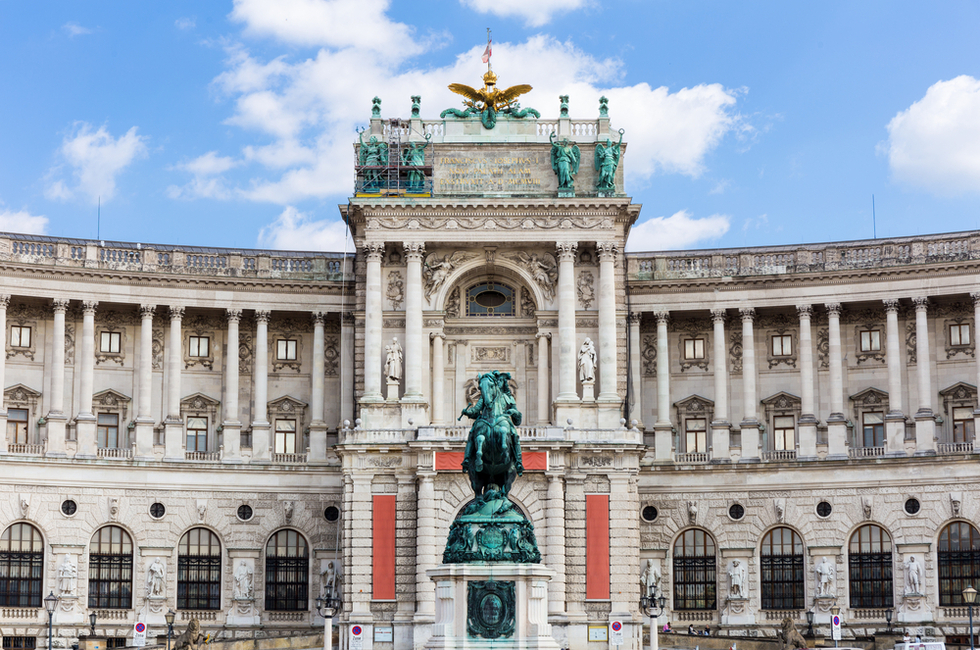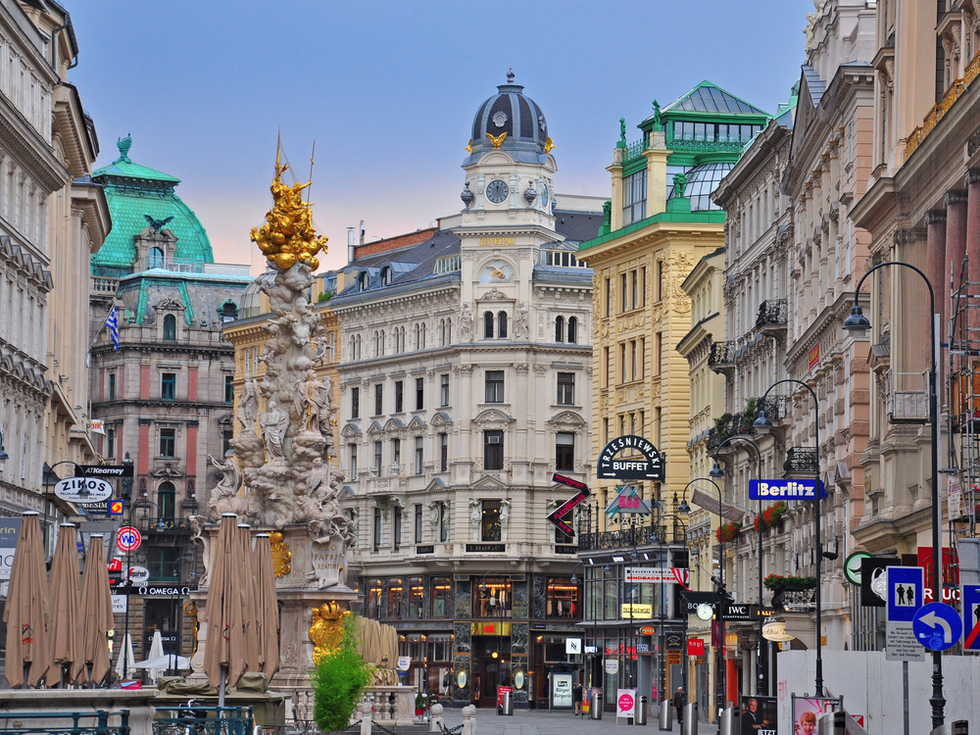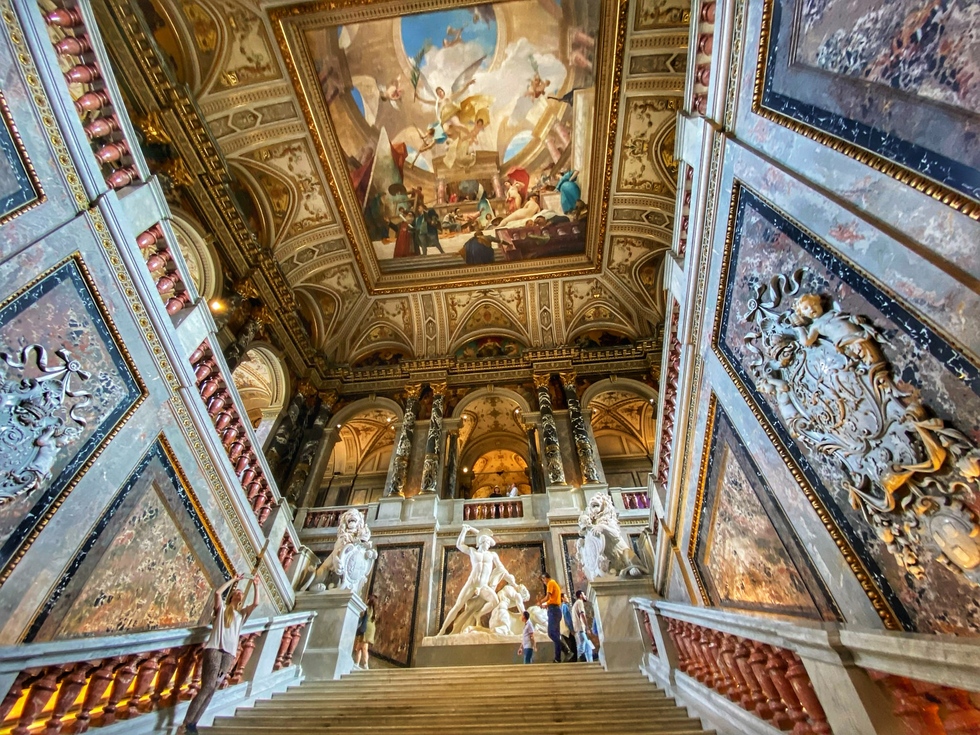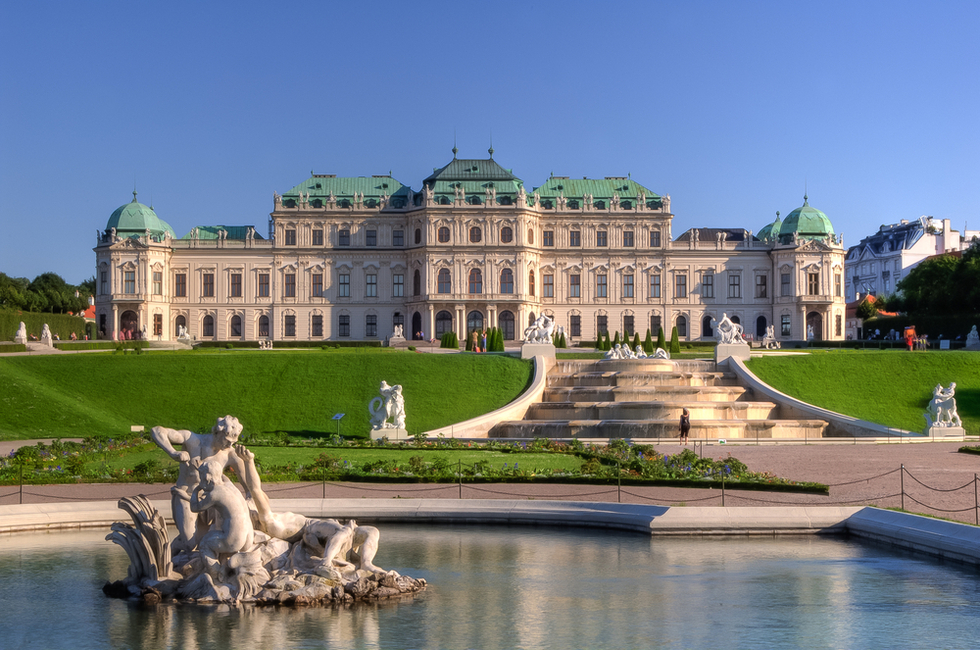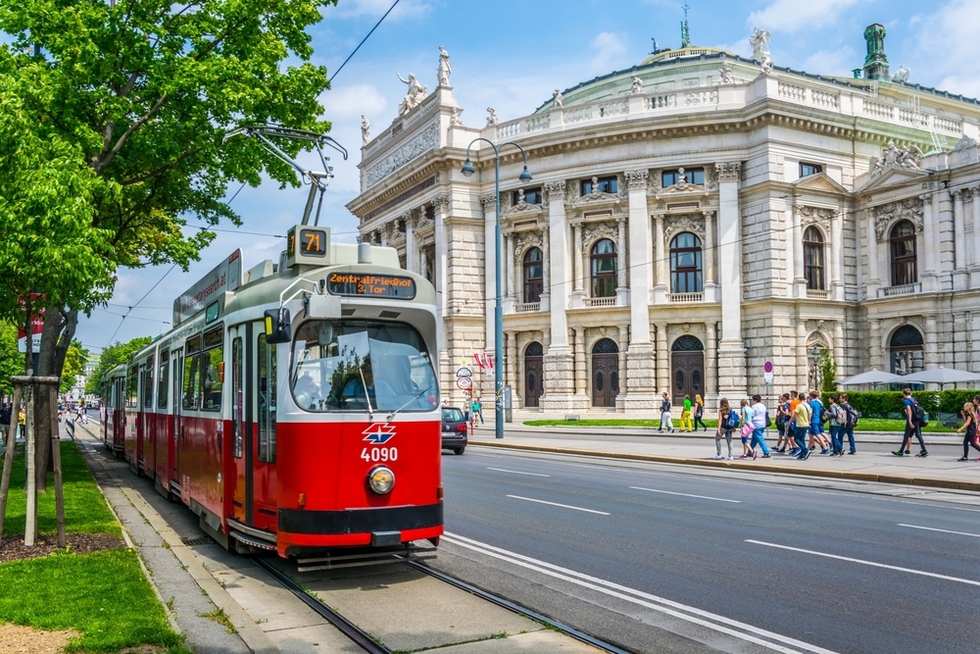Vienna Travel: How to Plan Your First Trip to Austria's Awesome Capital
By Pauline FrommerVienna is, in many ways, much like its most famous dessert, that chocolate brick known as the Sacher torte. Both the cake and the capital are densely rich, in a way very few pastries or cities are.
But although many a tourist in Austria has deemed Sacher torte a dry, overrated mouthful, Vienna never disappoints. It's a city where history colors every corner, museums and churches are crammed with compelling masterpieces, and music seeps into streets from under the doors of centuries-old churches and concert halls.
When I last visited, I wondered how anyone makes a living here. It seemed like the entire population was gathering in the middle of the afternoon for boisterous conversations in coffeehouses, or reading aloud to children on the sidewalk beanbags set up by the city's outdoor library program.
The empire Vienna once ruled has long been defunct, sure, but no one here seems to be letting that harsh their buzz. And the exuberance on the streets is infectious.
For visitors, a sense of obligation can chase away some of those joys. With so many important sights and experiences here, choosing which to focus on or, worse, trying to see too many in the course of a single day can drain the fun from a visit.
My advice? Plan to return.
And do what the wise do to make Sacher torte more palatable: Add the sightseeing equivalent of a dollop of whipped cream to vary your itinerary day by day.
Here are some ideas for taking a satisfying bite of the city during a first visit.
Vienna is a city shaped by its world-class festivals, performances, and special events. Before you book a trip, go to the city’s official tourism website to find out what will be on when. Enter the dates of your visit into the online calendar to see all the exciting happenings for that period.
Many travel sources say not to visit Vienna in summer because the most famous concert halls and the opera will be dark. But you can still take a guided tour of the historic Vienna State Opera in the off-season. And it's not as though summertime music is hard to find in Vienna, either. When I visited the city in August 2023, many of Vienna's majestic public squares became outdoor cinemas for free screenings of filmed concerts.
Thousands of people showed up, yet there were seats for all. To be in the Rathausplatz (pictured above), surrounded by soaring baroque buildings and listening to some of the world's finest musicians passionately perform was a bucket-list experience.
Though it started out as a Celtic and Roman settlement over a millennia ago, Vienna owes its current superstar status among travel destinations to its role as a seat of empires—Holy Roman and then Austro-Hungarian—from the 17th century into the early 20th. One of the mightiest dynasties in Europe, Vienna's Habsburg monarchy ruled present-day Spain, Austria, Hungary, the Netherlands, and other places, bringing untold wealth to the capital city.
That led to a building spree that created exemplary Baroque, Neoclassical, and Jugendstil (Art Nouveau) architecture, visible in opulent palaces, churches (the uber-Gothic St. Stephen's Cathedral is the most renowned), theaters, monasteries, and mansions. Many of these are located along the world-famous Ringstrasse, a series of boulevards arrayed in a ring shape (hence the name) where the medieval fortifications of the city once stood. A walking tour of this area and the medieval core will introduce you to many of Vienna's most impressive edifices. (I've shared some tour recommendations below.)
During its imperial heyday, Vienna became—and to a certain extent remains—one of the most important music cities on the planet. Mozart, Beethoven, Strauss, Liszt, and Schubert all called the city home, and today so do many of the finest interpreters of those composers' music. Taking in a performance is a must, whether it's an opera, an orchestral concert, or an evening with the rightly renowned Vienna Boys' Choir.
The city has been at the center of numerous world-changing events and movements. Visitors can go to the ornate Hofburg palace where many of the meetings of the Congress of Vienna (1814–1815) took place deciding who would rule which European countries after the Napoleonic wars. Later, the Hofburg played a role in one of the 20th century's defining cataclysms, when Adolf Hitler announced Germany's annexation of Austria from the balcony (pictured above) at the Hofburg's Neue Burg palace.
Schönbrunn Palace, the summer residence of the Habsburgs, offers tours as well. Napoleon has a connection to that pile, too, having used the place as his headquarters at one point.
Other sites of historical importance: the relatively modest apartments where Sigmund Freud birthed modern psychotherapy as well as the concept of the unconscious, and the former Jewish Ghetto, where you'll now find the unique and tremendously moving Judenplatz Holocaust Memorial.
To get your bearings and a solid understanding of the city's past, start your time in Vienna with a morning walking tour of the UNESCO World Heritage historic core of the city (pictured above). Among your many tour options, from priciest to least, are the offerings of Context Travel, which cost a hefty $163 per person on a group tour, but are led by true experts, many with advanced degrees.
At the other end of the price spectrum are the many "free" tours led by a hodgepodge of licensed guides who work for tips (usually $20). Guides' impetus to stay informative and entertaining in order to earn that money tends to keep the quality of their tours high. Prime Tours and Good Vienna Tours are among the best operators.
You’ll get a lot of history in the course of your morning tour, so devote your first afternoon to art in order to give yourself a breather. Chief among the city's attractions in the art history department: the Kunsthistorisches Museum (pictured above), which exhibits masterworks from a wide array of eras, with an unusually large number of delightfully detailed scenes of Flemish peasant life by Bruegel.
The museum at the Belvedere Palace also has an encyclopedic range of works, but is most famous for housing Gustav Klimt's shimmering The Kiss. Klimt is represented as well at the Leopold Museum, though the star of that particular show is the world's most important collection of works by the intense Expressionist painter Egon Schiele.
From here, create an itinerary of contrasts. If you do a palace in the morning, visit the comparatively humble but still fascinating home of Freud in the afternoon. Or spend some time noshing at the wonderfully diverse Naschmarkt, an open-air market, or wandering through one of the city’s bustling neighborhoods filled with boutiques and coffeehouses.
However you decide to divvy up your vacation hours, be sure to plan in advance. For many attractions—especially blockbuster sights like Schönbrunn and the Belvedere Palace (pictured above)—you should get timed tickets at least a few days in advance so that you don't find yourself shut out. The same advice holds for the city’s best opera performances, concerts, and restaurants.
Though some might consider this heresy, I think the shows at the Spanish Riding School are a big yawn. Yes, the horses are handsome beasts, but after you see the 10th one walking very slowly in some kind of geometric formation to the accompaniment of taped classical music, you’ll wish you’d decided to do something else. For a more compelling visit to this historic equestrian center, go to a rehearsal. Seeing the horses being trained—and messing up—is far more entertaining than the lugubrious and pricey show.
Additionally, you probably don’t have to go to more than one set of imperial apartments. They don’t vary that much one to the next, though a good tour guide will bring to life the historic events that happened in these spaces far better than the generally dull included audio guides do.
The walking tour companies recommended above offer tours of these spaces (as do many other entities). Note that many palaces contain artwork you'll want to see—so don't scratch those off the list. But to learn about the daily lives of Habsburg nobles, one set of apartments should do it.
Encompassing trains, trams, and buses, the public transportation system in Vienna is superb—easy to figure out and quite inexpensive. Consequently, you can stay outside of the city's pricey center without any real inconvenience. On my last trip, I saved about $50 a day by lodging on the outskirts, yet never spent more than 15 minutes getting to the sights I wanted to see.
With purchase of the Vienna City Card, you’ll get access to the city's public transit options for up to 3 days as well as discounts to most of the top museums and palaces. It’s a smart buy.
Biking around the city is affordable, too, thanks to a bike-sharing system that makes getting wheels and getting around fun and easy. Bike lanes are extensive and spacious. To learn more about cycling in Vienna, click here.
This is the most difficult question. In truth, you could spend a month in and around Vienna without running out of enjoyable activities and sights (such as the Imperial Treasury, pictured above).
Unless you have unlimited time, try to give the city at least 4 days. That will allow you to hit the most famous palaces, take in a concert, while away some time in a classic coffeehouse, commune with Klimt and Schiele, and really soak up this extraordinary city's glow.
Important note: Many of Vienna's top attractions are closed on Tuesdays, so if your time is short, try to avoid coming on that day of the week.
For more info on Vienna, go to our online guide.





